Current Recommendations
_________________________
“Library Mouse: Home Sweet Home”
by Daniel Kirk
 Author: Daniel Kirk
Author: Daniel KirkPublisher: Abrams Books for Young Readers
Reviewer: Melissa Binder, New Berlin Public Library
This sweet and smart picture book for kindergarten and older children begins with Sam the Library Mouse and his friend Sarah discovering that the library is being packed up for a renovation. After using the library’s dictionary to look up what “renovation” means, Sam realizes they must find a new home temporarily. Sam knows that researching what will make a good home is essential and he’s in the right place! Sam and Sarah use library resources to find information on architecture and begin building new homes using supplies from around the library. They learn about, and build types of homes including a castle, an igloo, a yurt, modern houses and a geodesic dome. Of course none of these feel like “home.” Soon the renovation is complete though, and Sam and Sarah move back into their “home sweet home” – the library of course!
The print is bold and easy to read. The
illustrations are rich, bright and detailed. The story is
interesting, educational and will resonate with those children who always
wonder what goes on in the library after it closes! The book
includes photos of the real house styles mentioned in the story. In
addition, children and adults will find the glossary of architectural terms in
the back very helpful.
Teachers will find this book can be put to use as a supplement to
lessons about architecture, building structures and homes around the world.
Librarians can use the book with lessons on teaching research skills. Children
who like learning will love this story of two friends faced with a problem and
how they go about solving it using research, information and hands on learning. Library
Mouse: Home Sweet Home is a lovable story about a familiar
mouse that encounters a disruption that many children themselves will face in
their lives...a home renovation or temporary displacement. As Sam discovered, children can learn what makes a house a home, while also
learning important problem-solving skills and research skills throughout this
enjoyable story.
“How
Rocket Learned to Read” by Tad Hills
Publisher: Random House Children's Books, 2010
Rocket, a white-and-black spotted puppy, is astonished to find himself being encouraged to read by a small yellow bird. Though reluctant at first – he’s more interested in napping than in reading – Rocket becomes captivated by a story the bird-teacher reads aloud. Once he shows interest, the bird begins teaching him the alphabet: L is laid out on the ground with leaves, W is demonstrated by a worm dangling from the teacher’s beak. They sound out words together as Fall progresses. On the day the bird is flying south, she leaves him with these parting words, “Don’t forget. Words are built one letter at a time.” During the winter months, Rocket continues practicing his alphabet and spells out words such as “W-I-N-D and C-O-L-D,” until the day he spells out M-U-D and knows that his teacher will soon return and their lessons will resume. This gentle tale reinforces the natural progression in learning to read (being read to, learning the abc’s, sounding out words, and reading together), and is imparted in a sweet story with charming illustrations.
“Dog
Loves Books” by Louise Yates
Publisher: Random
House Children's Books, 2010
Soft-hued pencil and watercolor illustrations highlight this simple love story. “Dog loved books. He loved the smell of them, and he loved the feel of them,” so he opens a bookstore to share his passion with others. The only problem is that there are no others, at least, not at first. A couple of people stop by for tea (which he doesn’t serve) and directions (which he kindly helps with) but no one comes to buy his books. To ward off feelings of disappointment, he simply begins reading, which takes him out of the empty bookstore and on to fantastic adventures; the appealing pictures reveal myriad pink-cheeked creatures from his stories and his imagination, including dinosaurs and space aliens. When a young patron does arrive, Dog knows exactly what his first customer would enjoy and she leaves happy with four new books. The tale begins with the front endpapers, showing a variety of bookless dogs, and continues to the final endpapers which reveal each canine reading an appropriately-titled book. A simple tale, charmingly illustrated in delicate pastels.
"Thrice Told
Tales" by Catherine Lewis
Author: Catherine Lewis
Illustrator: Joost Swarte
Publisher: Atheneum Books, 2013
Lewis starts with
the simple two line nursery rhyme account which details the mayhem committed
upon the mice by the farmer's wife. She then develops her characters, adding
names (Mary, Oscar, and Pee Wee) and uses them and their activities to
illustrate each of the 90 topics she treats in her advice to aspiring writers.
One can go to the venerable Strunk and White (Elements of Style, Longmans,
1999) or instead read Lewis's breezy, exhaustive advice.
In one or two page
humorous explorations, riff which go beyond the old thyme, she gives serious
attention to: l) literary forms (allegory,
legend, fable), 2) literary
elements (plot, character, dialogue), and 3) processes, (research, diagraming, and
transitions). At the conclusion of each of these, she ends with a "Snip of
the Tale," a very brief, and serious advice for the page topic.
The Appendix, presented
in alphabet order (but including page references to the earlier page) she
includes further explanation of the topics, as well as quotes from writers as
varied as John Irving, Jack Kerouac, and Harriet Beecher Stowe.
Light reading, with
serious value for writers at middle school level or beyond. Younger readers
won't understand the hilarity in "FARCE: The Mice Meet the Fairy Godmother
Miss Veronica" for example, despite the delicious campiness in this entry.
Lewis gives an explicit cross reference to The Three Little Pigs in her
InterTEXTuality explanation, though she includes other connections less
apparent as well.
"Ike's Incredible
Ink" By Brianne Farley
Publisher: Candlewick Press,2013
When we open a book we can often marvel at the author’s writing skill, and ability to draw us into the book, whether it is fiction or non-fiction. Seldom do we think about the process of writing and how difficult it is to move from an initial idea to a publishable work. Every author faces different difficulties in getting there.
Young Ike shares this difficulty with older
writers. Inspired by “incredible stories” he wants to create his own, but when
he sits down to write he has difficulty. Then begins a routine familiar to many
writers, ie: He is able to find many diversionary tactics. He searches for his
favorite pen, chats with his best friend, and cleans the house. Finally, he
decides what he needs is the right ink. Deciding he will gather the right
ingredients, he uses a large bag and into it goes, shadows (“shady and shifty
and mysterious”),Booga-bird feathers and even goes to the dark side of the moon
where he finds something quite unspecified to go into his bag. After that, as
he makes the ink which turns out to be quite a messy process, when the ink is
made he is able to sit down and write an incredible story.
Farley’s word skill is impressive as she strings together for
instance, four different words to describe the process of making the ink. Here
and elsewhere in the book, She gives adults delightful words to read aloud when
presenting the story to young children.
The art features pen lines which describe objects and create a
casually depicted imaginative environment for Ike. A purposefully restrained
color spectrum within the book follows dark grey end papers with white ink
designs of the implements needed to make the ink. The story may in fact
encourage youngsters to stop procrastinating and start writing after they have
had a chance to talk with their teacher about what they do to avoid doing
something else.
"Miss Moore Thought Otherwise" by Jan Pinborough
Illustrator: Debby Atwell
Publisher: Houghton Mifflin, 2013
Publisher: Houghton Mifflin, 2013
One of the doyennes of
library work with children was widely known and respected among library folk
but little known outside her chosen field of interest. Annie Carroll was
apparently fearlessly convinced that it was just fine for her to have opinions,
to express them and act on them. In the 1870s people had very specific ideas
about what boys could do and what girls could do. Little Annie much preferred
wild toboggan rides to sitting quietly at home sewing. When she was nineteen
she decided to be a lawyer, again an unusual assertion of her own will. She
went off to New York, having heard that women were hired as librarians. Many
people thought New York was too dangerous for a woman, “but Annie thought
otherwise.” There are rich details of her career including her commissioning
child-sized tables and chairs especially for a children’s room she was
planning. All across the country libraries began to copy the ways Moore had set
up her children’s room in the main New York City Library. Her travelling to
promote changes in library children’s rooms, as well as her speaking and
writing were widely influential. As result there is no doubt that children’s
access to quality books is improved.
Atwell’s art is
particularly appropriate as a quasai-folk art reference back to the time when
Moore was growing up in the late 1800’s. Single as well as double page spreads
are interspersed with smaller vignettes. These are done in pleasant, fairly
intense flat color, much like the work that Grandma Moses did which made her so popular
during her art career. There is an author’s section to close the book, which in
fact acknowledges that it was not just Miss Moore but a number of other women
who were pioneers in shifting public opinion about children, books for
children, and how to connect the two.
What a gift to have this
new edition of text and art, both of which are probably unfamiliar to most
children and many adults. Lincoln’s words were crafted 150 years ago, and
though Daugherty was one of the most popular artists of his day, he is not well
remembered today.
The full color jacket of Daugherty's art
wraps around an elegant medium blue cloth color with the title in gold. Dark
blue solid color endpapers are a vivid contrast to the full color art. The
publisher has done an impressive job of presenting these full color paintings
on coated paper with wide white margins which intensify the highly saturated
colors. The 12"h by 9 1/4"w format opens to a full 17 1/2" wide
double spreads in the realistic style characteristic of the artist's work.
There is an interesting
reflection of the time this work was originally published; In the double spread
for the part of the address, “The brave man living and dead…” the men are
depicted in World War 2 uniforms.
Daugherty's original
forward to the book follows his designs for the half title and full double
spread title. An afterward by a professor of Civil War studies, Gabor Boritt,
describes the context of the situation in which the address was given. A
facsimile of the address in Lincolns own handwriting is included. One of the
most interesting aspects of the book is the end matter, Daugherty's
interpretations of each of his paintings.
Click here for purchase and inquiry
"Louisa May’s Battle" by Kathleen Krull
Author: Kathleen Krull
Illustrator: Carlyn Beccia
Publisher: Walker, 2013
Publisher: Walker, 2013
Louisa May Allcott lived
a life constrained by her times. This woman writer, more often known by name
than experienced directly through her writing, is here used to present several
interesting insights into how authors work. Another aspect of the book is the
detailing of how she went beyond the usual boundaries.
Though the Civil War
proved to be a life altering event for her, she had been writing for some time
and continued on to a successful career after her experiences nursing soldiers. Little
Women (1868) made her a rich woman, and she continued to write
extensively. Resisting writing “a girls’ book,” she used pieces of her
childhood, sometime later, assembling material into a story which she set
during the war itself.
She wrote continuously
throughout her life, before she went to war and after. It was, at the
beginning, a necessity as writing “…kept her family going…” Like some other
writers, she wrote many letters, many for herself, but others for the soldiers
she tended in the hospital. Conditions to do that were challenging: she wrote
using an “upside-down teakettle as a desk.” Like many writers, she had to be
strong in the face of rejection: but like others, she faced rejection and
continued to write. Letters originally published in one format (an antislavery
newspaper) were later re-published in book form.
Lacking the
tongue-in-cheek approach of several of Krull’s books
comprised of several individual biographies, this single person subject is more
serious. Lives of the Musicians: Good Times, Bad Times (and What the
Neighbors Thought), Harcourt, 1993.
An end matter pages
includes “Women in Medicine,” listing briefly six other women involved in
various ways. A list of sources, and a map and description of the battle of
Fredericksburg, which figures prominently in the story, are also included.
“Noah Webster and His Words” by Jeri Chase
Ferris
Author: Jeri Chase Ferris
Illustrator: Vincent X. Kirsch
Publisher: Houghton Mifflin, 2012
Few people when seventy
years of age accomplish something so significant that it is not just an
individual accomplishment but also affects many other people. It was in 1828,
when Webster (1758-1843) finally published his dictionary that twenty years of
work took physical form in 2,000 pages of a dictionary. This wasn’t Webster’s
first attempt at writing. His series of “Blue-backed spellers” educated
thousands of school children. The dictionary which those twenty years
culminated in, had two smaller predecessors but with English spellings. His
effort to explain every word in the English language resulted in the second
more popular book printed in English after the Bible. Ferris chooses to
exemplify common dictionary practice throughout her book in that when a word is
introduced, its part of speech and definition are included.
The art by Kirsch gives
a charming nod towards the historic with watercolors and graphite enclosed in a
purposefully shaky and scratchy line. The depiction of the characters leans
towards cartoonish ( ie: people’s heads are oversized), but exaggeration is not
carried to a fault. All of the art on facing pages is firmly bordered in a
double black rule. The book ends with a chronology and final page including
some additional biography details and a bibliography.
"Hands Around the Library. Protecting Egypt's Treasured Books"
by Susan L. Roth and Karen Legget
Publisher: Dial Books, 2012
Fans of Susan Roth would
recognize her signature collage art style even without seeing her name on this
account of a real event. The end papers show people - male, female, and
children holding hands to form the protective circle around the Bibliotheca
Alexandrina. Why would a library need protection? Roth and her co-author
recount the tumultuous days in 2011 when one of the most ancient of
civilizations was undergoing upheaval, making a transition to a democratic
society. The preventative effort to surround and thus protect from looters, the
Egyptian jewel, home to over 1,000,000 books was successful. Despite riot
damage elsewhere, and in other countries since the library remained unharmed.
There is very effective
language. The book opens “Once upon a time, not a long time
ago…” and the same sentence is used to close the book. At the conclusion we
find a double page spread featuring small photos of various aspects of the
event: exterior and interior views of the building as well as people who were
involved in the event. This provides a link between the retelling of the events
and the literary retelling. There is other end matter as well: a section
entitled, “Alexandria then and now,” a resource list which includes some common
words in Arabic script, and a note from the artist/author which helps fill in
details that children will not necessarily know.
"Rocket Writes a Story" by Tad Hills
Publisher: Schwartz and Wade Books, 2012
Following on the success
of his earlier How Rocket Learned to Read! (Random
House, 2010), Hills builds the success on the earlier title rocket makes a
collection that will delight the hearts of teachers as well as providing a
positive message for children. The end papers feature individual words tacked
up on tree leaves which Is clearly a takeoff on a prominent part of the “Word
Wall” procedures so common in classrooms. Rocket, the book lover, is encouraged
by his little yellow bird friend and by his teacher. As a result he goes
looking for words. At times little bird adds her own words to the collection
the two of them are creating. Rocket’s decision to write a story doesn’t elicit
a lot of response from those he tells about it. The next day when he tries to
write, he discovers what writers’ block is, but with the help of little bird
who serves as editor he is able to craft a story. Wanting to share this work in
progress he calls to the nest occupant in the tree he’s passed without any
response. The next morning he is surprised to discover at the foot of the tree
a new word and it’s the interaction between Rocket his new friend, owl, which
results in a happy completion to his story and a new friend.
Hills’ pleasantly simple
art on double page, single page, and smaller vignettes makes for pleasant group
sharing or individual enjoyment. The appealing little dog will probably be
popular enough to ensure another sequel- perhaps involving rocket in one of the
other arts?
“Homer the Library Cat” By Reeve Lindbergh
Author: Reeve Lindbergh
Illustrator: Anne Wilsdorf
Publisher: Candlewick Press, 2011
The endpapers show the
self-possesed Homer on a frollicking journey, looking delighted to be out and
about, though as the story reveals, he doesn't know where the journey described
later will end. Wilsdorf once again uses her recognizable
style of sharp pen line and watercolor washes, brighter than pastels and often
modulated within a given shape. ( reference to Wilsdorf's Three Blind
Mice??)The informality of the art establishes a particular place and time.
Wilsdorf shows Homer and his "quiet lady" in their home (with a full
bookcase offering a hint of things to come). As the plot develops, we see the
small town with bookstore, and post office. The inside view of the fire station
as Homer continues his wandering, is a particularly effective double page
spread. Artist Wilsdorf shows the huge engine, with Homer's self-satisfied
expression attesting that he likes to be seated up high. In another double
spread, height-vantage point he looks out from the empty boxcar. Having jumped
to escape when the train begins to move, Homer seeks shelter in a
"quiet" building which turns out to be the library where his owner is
the children's librarian. The children love Homer and the feeling is mutual, so
as he goes there every day, the children all think that's just
"purr-fect." This is a rather slight journey tale with such a
positive ending, enlivened by the art. that really develops a feeling for
Homer's personality.
Click here for
purchase and inquiries
"The Brave Escape of Edith Wharton" by Connie
Nordhielm Wooldridge
Author: Connie Nordhielm Wooldridge
Publisher: Clarion
Books 2010
Escape from what?
Potential readers might indeed wonder about the title. Certainly she is not
escaping from any physical danger. And yet, as we learn details about Wharton’s
life, we begin to see the myriad ways she was hemmed-in, constrained by the
society in which she lived. And prevented, for some time at least, from
achieving the destiny she felt so strongly for herself. How to accomplish what
she was driven to do? That is what will link her to contemporary readers, no
matter what they themselves are driven to do.
Certainly life
circumstances make her seem remote, like a fantasy. She lived in a world where
the wording on an invitation, or the proper placement of a fish fork was
considered important. The child of wealthy parents for whom doing the “right”
things was paramount, until an adult she knew only a small group of equally
wealthy socialites. Many of them summered at Newport “cottages,” mansions of
seventy rooms were common. These people as one of them, Ward McAllister,
determined, were the 400 New Yorkers who “counted.” This was at a time when the
city itself had a population of over a million inhabitants. Evidently the rest
of them were unimportant to those of Edith’s social class.
Despite privileges,
multiple trips to and from Europe, servants and a coterie of wealthy bachelors
who delighted in her company, Wharton felt mired in an unhappy marriage to a
man whose grasp of reality was tenuous at best. This disciplined woman partitioned
her life so that she wrote for a number of hours each day. Then she put aside
her work and went about the business of being an ornamental hostess,
entertaining and being entertained by the likes of Mrs. Astor.
Wharton’s breakthrough
came when her first story was published in a national magazine in 1891, when
she was 29. This was followed by a prodigious output of nearly 50 books as well
as quantities of poetry and articles; eighteen movies have adapted her work to
the screen. During her most productive year (1924) she published four books.
Widely accepted as the most influential writer of her time, when she published Ethan
Frome, it was a major change in her characters and settings, including a
hero who was trapped in an unhappy marriage. Two years later, Edith finalized
her divorce. When she was younger, divorce was considered scandalous and Edith
clung to that belief though by 1913, attitudes had changed. At 51 years of age,
she was single.
Though filled with the
many particulars of Wharton’s life, the biography moves along briskly; the
gossipy bits about Wharton’s extended family’s comings and goings shows that
beneath the veneer of proper society, there were complications, resolutions and
stand-offs, as there are today.
A myriad of vintage
photographs and a variety of helpful end-matter sections enhance the writing.
Exemplary treatment of sources shows the care with which the author researched
and reported her findings. More importantly for young readers, Wooldridge has
established a time and place remote from today, but provides a vivid portrait
of a determined and talented woman to activate the story.
"Miss Brooks Loves Books (And I
Don't)" by Barbara Bottner
Illustrator: Michael Emberley
Publisher: Knopf Books for Young Readers,
2010
Reviewed by: Maryann Owen
Miss Brooks, an enthusiastic
school librarian, is beyond the comprehension of first-grader Missy. Miss
Brooks loves to read, loves to share books with children and even loves donning
costumes in order to get kids excited about reading. Missy, with her round
glasses, stocking-knit cap, denim overalls and perpetually bored expression,
doesn’t like books, though her librarian is sure there’s one out there that
will snag the girl’s fancy. To Missy, books are “too kissy. Too pink. And too
silly.” Book Week looms in the near future and each child is assigned to dress
as a character in a favored book. With help from her mother and the unflappable
Miss Brooks, Missy finally discovers the perfect story to share with her
classmates. Watching a child who scoffs at books become passionate about one is
quite satisfying. Emberley’s pencil and watercolor illustrations add humor to
this amiable tale of a girl getting hooked on books. The pictures are filled
with fun-to-peruse details, including Miss Brooks’s mascot, a brown teddy bear,
dressed up for story times and every child sporting a white, puffy tail while
listening to THE RUNAWAY BUNNY. Children and adults will enjoy this tribute to
books and the joys of reading.
"Wild About Books" By Judy Sierra
Illustrator: Marc Brown
Publisher: Knopf, 2004
Such a joyous,
affirmative statement about the joys of reading! Sierra tells a story in verse
about a librarian, Molly McGrew, who with a poor sense of direction drove her
bookmobile into a zoo and settled into her chair to read. The menagerie of
animals, hesitant at first, gradually let curiosity overcome uncertainty. So
mink and moose, lynx elephants and a whole host of others come to find out from
Molly what reading is about. Sierra provides plenty of end rhyme, but also
cheery alliteration, ie: "Forsaking their niches, their nests, and their
nooks..." she moves listeners/readers along at a brisk pace. Like any good
librarian, she teaches the animals how to treat books right, ie: the boa
constrictor stops squeezing CRICTOR too tight! The outcome of all this newly developed
love of reading is the impulse to write themselves, for as Sierra assures
the gazelle (a poor speller) "like everyone else, she had stories to
tell." Writing in a variety of forms, using implements at hand (ie:
porcupines write with their very own quills," they also turn to being
critics before they win prizes for their writing when the hippo's memoir was
given the Zoolitzer Prize!
Marc Brown's art
in his recognizable style, is as cheerful as Sierra's words. The double page
spreads, in a generous size (12"h x 17 3/4"w) allow plenty of room
for the many textures and repeated patterns that his fans appreciate. The
animals aren't realistic- no need for them to be- and there's no attention paid
to their actual proximity- simply because this is such engaging fantasy. What a
master of his visual language this artist is.
Click here for purchase and inquiries
"The Library Dragon" by Carmen Agra Deedy
Illustrator: Michael P. White
Publisher: Peachtree Publishers, 1994
There are lots of puns
throughout, several of them visual. For instance when Ms. Scales describes
story time as medieval, the art by White shows the children in makeshift
medieval headgear ( ie: a pot and collider.) Another visual pun at the end of
the book shows Ms. Scales’ tail with the words, “The end of our tale.” The
hard-edge, softly pastel airbrush illustrations stretch across the pages,
augmented with various print labels clearly differentiated in style and size
from the text itself. The book ends with a page of library rules of which even
Ms. Lotta Scales would approve.
A good story often
begins because of a mishap. Molly needed to find her misplaced glasses and as a
result, things changed significantly in the library. Having advertised for a
new librarian, the school got something they didn’t anticipate, Ms. Lotta Scales.
This was a librarian who believed in everything in its place ( ie: 398.2 s in
the 500 s). No checking out books, no story time and the children’s grades were
as a result, “going up in smoke.” When a dragon is running the library that may
be inevitable. But because of Molly’s glasses, things change while Ms. Scales
napped. Molly’s accidently beginning to read out loud attracted an appreciative
audience of listeners and the reading transformed Ms. Scales into Ms. Lotty, a
librarian any school child would love.
The accompanying CD
features a quiet musical introduction but fortunately this doesn’t also
accompany Deedy’s spoken interpretation. As an accomplished story teller, she
adds an occasional sound effect and varies her interpretation in tempo and
pitch. She does different voices but these are imaginative rather than
intrusive. The disc also includes a version with audible indications of page
turns in the book, so beginning readers can follow sound and printed words
through the book itself.
Click here for
purchase and inquiry
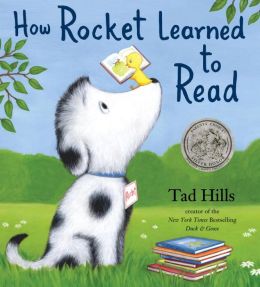

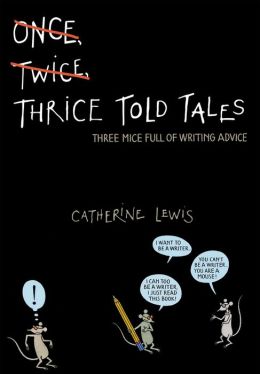

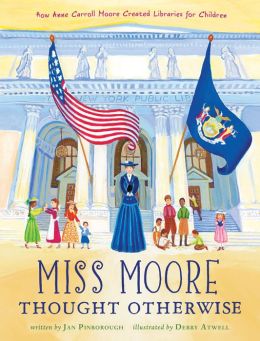
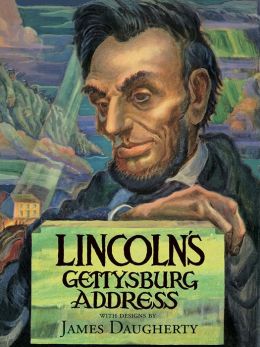
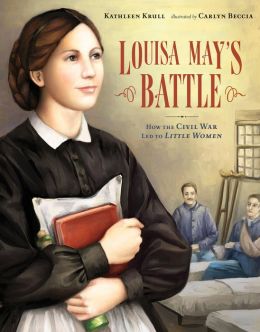
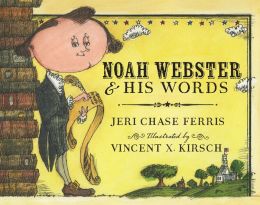
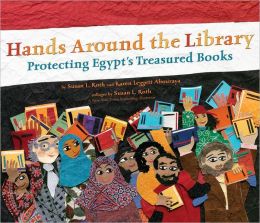
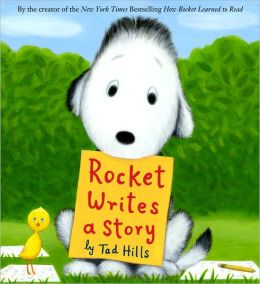
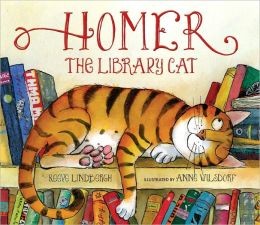



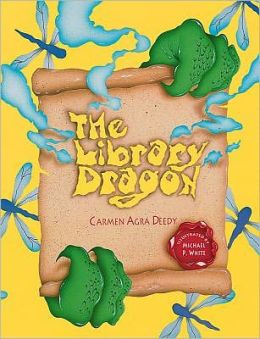
No comments:
Post a Comment